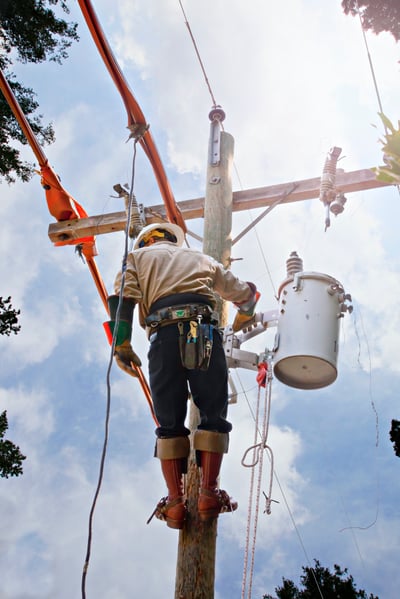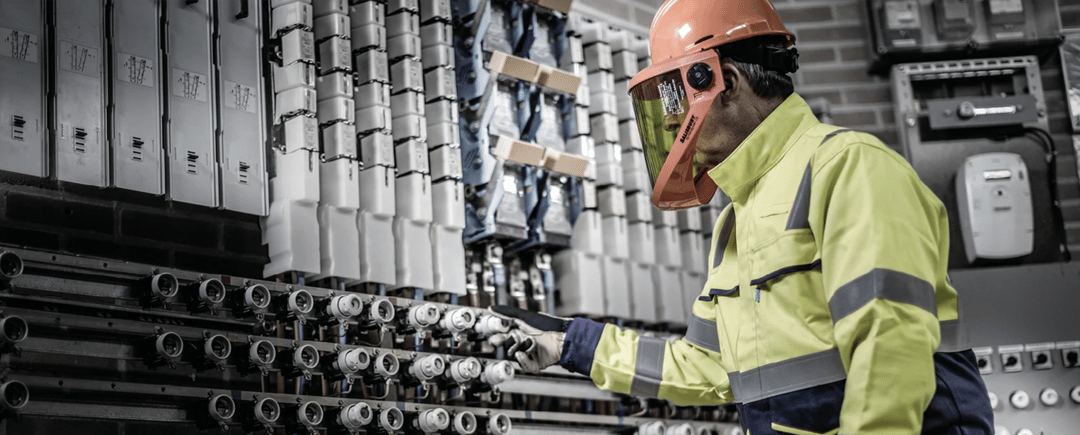The fiery split second an arc flash explosion occurs is the moment of truth that determines if an electrical worker stays safe under their protective garments. A common assumption in many industries is that multi norm clothing offers protection against all work environment risks. Unfortunately, that’s not always the case. Feel confident your employees have proper protection against a potentially deadly arc flash with our expert tips for wearing protective garments the right way to minimize hazards.
What is an arc flash?
An arc flash is a dangerous electrical explosion caused by a rapid energy discharge. A short circuit connection between two conductors can generate so much heat that surrounding metal parts vaporize, then expand to form an enormous pressure wall. This pressure build up causes a plasma fireball up to 19,000 degrees Fahrenheit (four times hotter than the sun) to explode directly in the electrical worker’s path. An insufficiently protected worker will almost certainly experience horrific external and internal injuries, if not death.
Wearing the right garments the right way
Workers injured by an arc flash are more likely to need 30 days or more for recovery due to the severity of their injuries. Protective clothing is a crucial part of arc flash protection to prevent flashovers (the transfer of fire) from causing injuries or life threatening situations. As a Health and Safety manager, providing your employees with proper flame resistant garments is vital, but educating them on correctly wearing them is even more crucial.
Electric utility workers
The coverall is a commonly used one piece garment for energy distribution and electrical utility workers performing installation or maintenance work. Sometimes, a combination of a pant and a jacket is worn. Workers train thoroughly in incident simulations and are well equipped to deal with arc flash events. Although these high consequence events are rare, even a highly trained employee can become complacent about safety protocols.
Coveralls are often known for being large and cumbersome, but the benefit is that they offer complete coverage from top to bottom. Coveralls can protect workers against severe injuries in the event of an arc flash. A worker who fails to fully zip their coverall because they are feeling overheated on the work floor, for instance, can face a dangerous exposure.
Tip: Select the most comfortable outer layer possible
The coverall should be comfortable enough to wear completely closed for long periods on the work floor or in the field. Complete protection also depends on the ease of use, not just fabric comfort, so we encourage you to collaborate with garment designers to make sleeves and zippers easy to secure.

Non-electric utility workers
Pants, jackets, and occasionally coveralls are the protective garments of choice in multi norm environments such as factories or industrial plants, thanks to their versatility. Here, electrical safety may represent just 10% of an employee’s work activities. With little training or idea of the potential risk in the instance of an arc flash, workers in multi norm environments may compromise their safety by failing to secure their protective garments.
Most arc flashes find impact at chest height, but they can also hit a worker from below (while drilling in the ground) or above (while repairing an overhead line). If the cuffs, waistband, and collar are not tightly closed, a tremendous burst of energy can shoot underneath the protective garments. And if the worker is wearing a cotton shirt rather than a flame resistant undershirt underneath, it can result in very severe burns.
Tip: Provide your workers with a flame resistant base layer
Understanding the entire risk spectrum requires a garment system beyond the outer layer. Consider adding a flame resistant undershirt to your protective garment system.
Determine your risks & suit up accordingly
A risk assessment and work situation analysis is the best way to lay the groundwork for the protective system you need. Once you’re aware of the risks in your work environment, you can take appropriate measures to protect your workers.
Having an electrical safety protocol is good, but make sure that the protective garments you provide your workers are comfortable enough to be used properly.
Hesitant about your protective garments?
TenCate Protective Fabrics is the expert helping you mitigate your electrical safety risks. Contact us with your questions about protective (under)garments for electrical workers or the risks related to arc flash events.





.png?width=399&name=Untitled%20design%20(40).png)


